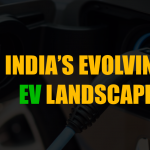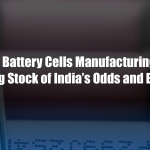Desperation to be self-sufficient – Global outlook of EV cell market
Electric vehicles (EVs) are set to fundamentally disrupt the 130 years old automotive industry. And the Electric Battery cell happens to be the heart as well as the main and costliest component of EVs. Not surprising that it happens to be the focal point of R&D and innovations.
So far, the focus of most countries has been on developing power trains and EVs to compete with China in the EV race. EV Battery cell manufacturing was not an area of focus or concern. The EV battery cell manufacturing is currently being dominated by China’s CATL and BYD, Japan’s Panasonic and Envision AESC and Korea’s LG Chem, Samsung SDI and SK Innovation. Through policy support and strategic investments, China has betted big on the EV Revolution. China’s tight grip on battery cells manufacturing, pricing and a supply chain monopoly is not a desirable situation for nations across North America, Europe and Asia.
The Dragon at work
Industrial policy in China allows its companies to dominate the harvesting as well as processing of critical raw materials for EV production. It controls 80% of the world’s raw material refining, 77% of the worlds cell capacity and 60% of the world’s component manufacturing. China is currently the world’s largest EV consumer as well. In China, however, local battery cell makers are preferred over foreign suppliers. This biased, concentrated supply and concentrated upstream consumption creates security as well as disruption risks in the EV supply chain. This does not augur well for anyone else.
Late arrivals and the frenzy to gain lost ground
As already mentioned, rest of the world has woken up a tad too late to the importance of battery cell manufacturing and the supply chain risks associated with Chinese domination. However, it is a case of better late than never. Europe, US and India are now gearing up for self-sufficiency and competition in this space.
Currently, Europe manufactures less than 1% of all global batteries compared to more than 90% in Asia. The European Commission formed the European Battery Alliance (EBA) in 2017 to address the main concerns of self-reliance, a battery cell eco-system for European consumers and a sustainable way of achieving climate neutrality. So far, the EBA has approved 59 enterprises and € 20 billion have been committed in state aids and private investments for battery cell projects across the entire value chain. However, access to raw materials and shortage of skilled labour remain the two main areas of concern. There are mining projects coming up in the Czech Republic, Portugal and Finland for accessing their lithium reserves. A total of 38 Gigafactories are being built across Europe to provide a combined output of 1000 gigawatt hours (GWh).
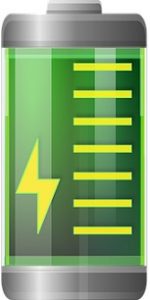
Given Asia’s dominance and Europe’s ambitious plans, North America and especially the US will certainly not want to miss the EV battery bus. Actually, US already has an installed capacity of 43 GWh which accounts for 10% of the world total while China commands a whopping 77% of the world’s total installed capacity for manufacturing batteries. By 2025, China will likely lead with a 63% share and Europe might become the second largest at 15% leaving US behind at 9% of the total installed capacity. Under its new leadership, US has laid out a $175 billion stimulus exclusively for the electric vehicle industry, both for manufacturing and purchasing. The obvious beneficiary of these policies and schemes will be Tesla. General Motors (GM) will be setting up two battery cell factories in collaboration with Korean LG Chem. Both Tesla and GM will be setting up battery cell capacities to serve their own captive demand. However, there is one more Korean company, SK Innovation that plans to set up two plants in the US meant for external sales.
Besides lithium-ion technology, US is also seeing private sector investments and start-ups in solid state battery technology as well as silicon-dominant batteries. It is also prioritising mining and processing at home and in its partner countries.
In Asia, Japan and Korea are currently at 2nd and 3rd position. Both countries are leaders in battery cell and components manufacturing. But both these Asian economic giants do not have the same influence in raw materials refining and mining as China. Japan’s Toyota is leading research on solid-state battery technology. However, the commercialisation of such technology is still a decade away.
Scenario in India
ISRO is the National Space Agency of India. It was the world’s first space agency to find water on the moon and insert a probe in orbit of Mars in its maiden attempt. ISRO’s spin off technologies have founded many crucial innovations for India’s engineering and medical industries.
has been involved in the R&D for battery cells. The country is fast catching up with the rules, regulations and developments of the automotive world across the globe. Favourable Government policies to address climate neutrality, electric mobility and road safety are giving an impetus to the automobile industry in India. The Indian market is a price-sensitive consumer market. The objectives of the National Electric Mobility Mission Plan (NEMMP) will be easier to achieve with localisation of entire EV supply chain. Currently India is also heavily dependent on oil and gas imports. When it switches to clean mobility, if there is no adequate supply of domestic cells and batteries, it will simply switch from oil imports to battery cell imports. And this issue is being addressed by the government, through various policies and schemes.
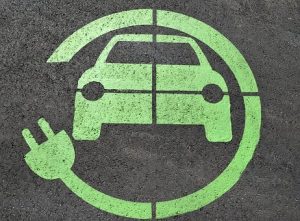
Atmanirbhar Bharat – the Make in India Initiative
India is a hub for battery cell minerals like graphite, aluminium, copper and others. China is dependent on imports from countries like India for the manufacturing and supply of 80% of the world’s anode demand. At some point, India needs to transform from being a minerals supplier to becoming a materials supplier.
The Government plans to launch a phased manufacturing programme (PMP) to support setting up of a few large-scale, export-competitive integrated batteries cell-manufacturing giga plants in India. Until a few months ago, outlays through schemes such as FAME I and FAME II focussed only on the faster adoption of EVs. However, in May 2021, the government announced production linked incentive (PLI) scheme for manufacture of Advanced Chemistry Cells (ACC). The following are some of the key points of this PLI scheme:
- Technology agnostic scheme
- Scheme for setting up 50 GWh of ACC (minimum 5 GWh) and 5 GWh of niche ACC (minimum 0.5 GWh)
- For niche ACC, “higher performance” is required, guidelines are yet to be announced but discussions are ongoing.
- Factory to be commissioned in less than 2 years, subsidy for 5 years thereafter.
- Mandatory investment of US$30 Mn/ GWh, domestic value addition of 25% initially, 60% within 5 years (including that of subsidiary / ancillary / domestic suppliers)
- Subsidy = Subsidy amount / KWH x % value addition achieved x actual sale in KWh.
- It will be paid out on the basis of energy efficiency, sales, battery cell life cycle, and localization levels.
- Expected investments totalling US$6.20 billion.
- Under the scheme, a quality and cost-based selection (QCBS) method will be used to evaluate bids where both the subsidy quoted and the value addition offered by the bidder would be taken into account during the selection process. The selection process will be competitive and transparent.
The scheme allows manufacturers to avail of incentives close to $ 25/kWh from the central government in addition to an array of attractive and welcoming state subsidies ranging from capital investments and R&D subsidies to equity partnerships et all. To further support initiatives, the Government is disincentivising imports with the clarion call for Atmanirbhar Bharat.
The Fortune cookie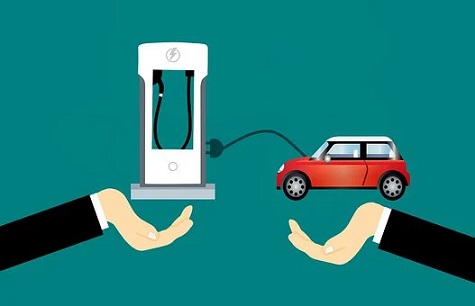
The battery cell manufacturing industry promises to be the harbinger of many changes and fortunes around the globe. Innovations such as solid-state batteries, fast charging carbon-based batteries, cobalt free lithium-ion batteries, replacing graphite in the lithium-ion batteries and hydrogen fuel cells are some global developments that will see further R&D investments.
The World Economic Forum (WEF) has proposed setting up a process by G20 nations to handle emerging tensions in the field of electric mobility. It has also proposed the possibility of the US, EU, China, Japan and South Korea pledging increased support including funding for next generation battery cell technologies to international R&D initiatives on EVs. WEF has suggested that the EU needs to work more closely with countries with deposits of metals and minerals to improve resource governance.
In India, battery storage has great opportunity in promoting sustainable development considering Government initiatives to promote e-mobility and renewable power (450 GW energy capacity target by 2030). The government has also declared Battery Storage as the Champion Sector.
India has more youth demographically. With rising per capita income, the demand for consumer electronics such as mobile phones, laptops, power banks, ups, etc. and for EVs has been robust and rising. All these require advanced chemistry batteries. This makes manufacturing of advanced batteries including storage capacity and recycling, one of the largest economic opportunities of the 21st century in India.
To learn more about the Indian Battery Cell market, contact me at sudhir.nerurkar@quanzen.com.



